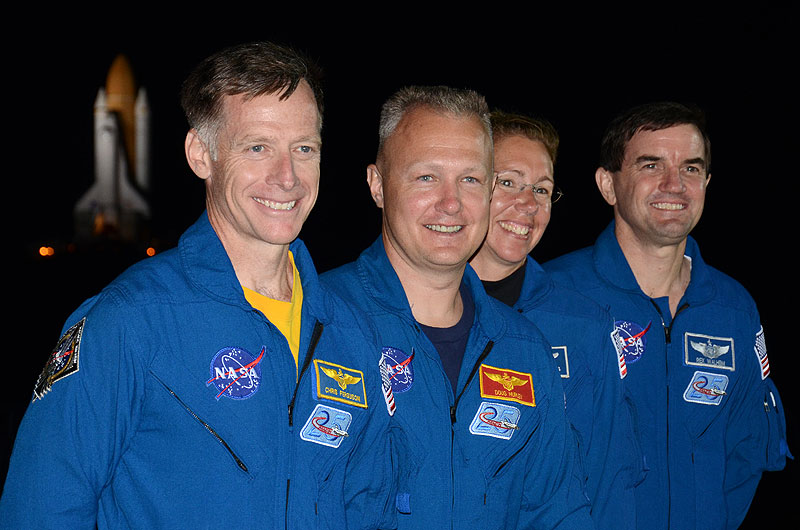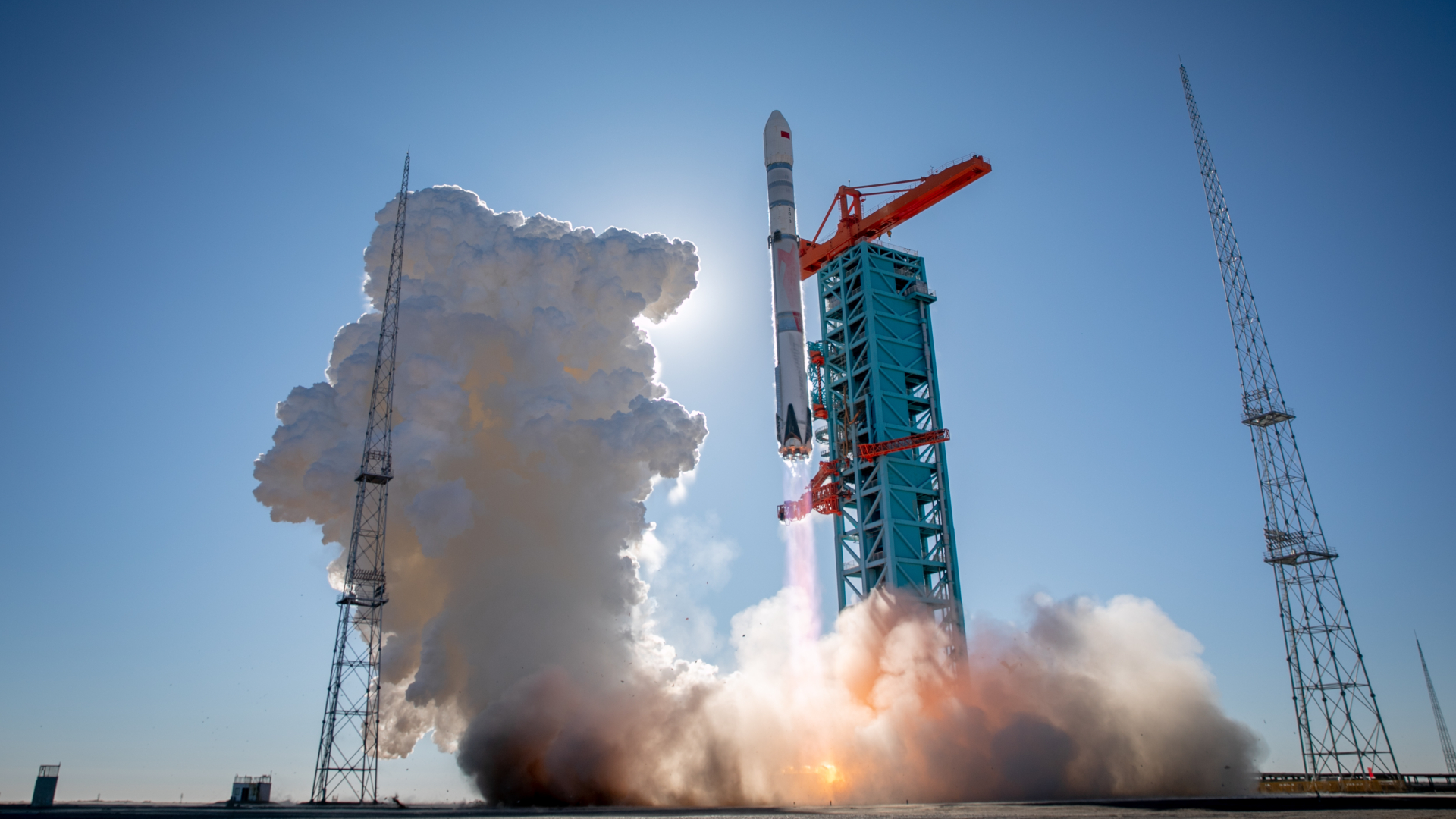NASA's Final Space Shuttle Mission — Where Are They Now?

One year (and one day) after launching on NASA's final space shuttle mission, the orbiter Atlantis is parked today just a few miles from the launch pad where it lifted off on July 8, 2011.
No longer flight-worthy — its main engines replaced with replicas and its hazardous fuel lines removed — Atlantis is waiting inside a high bay in the Kennedy Space Center's Vehicle Assembly Building to complete its transformation into a museum-safe displaylater this year.
This November, NASA plans to roll Atlantis, the last of its space-flown shuttles, down the road to the center's visitor complex, where a $100 million exhibition hall for Atlantis will open to tourists next summer.
Like Atlantis and some of its parts, so too has dispersed the team that led STS-135, the final flight of NASA's 30-year shuttle program. A year since working together to fly one last mission to the International Space Station, the astronauts, Mission Control directors, and managers have since moved on to other missions, programs, and in some cases, other organizations.
The final four
Atlantis' four astronauts — commander Chris Ferguson, pilot Doug Hurley and mission specialists Sandy Magnus and Rex Walheim — stayed together as a crew for four months after flying the 13-day STS-135 missionfrom July 8 to July 21, 2011.
They toured NASA centers, spoke to the public about their mission, visited with President Obama in the White House and then finally, on Nov. 2, posed for photos together with the crew of the first space shuttle mission, STS-1 astronauts John Young and Bob Crippen. [NASA's Last Shuttle Mission in Pictures]
Breaking space news, the latest updates on rocket launches, skywatching events and more!
"We're done," Ferguson said that day, following the photo shoot. "Everyone goes their separate ways right now."
For Ferguson, that meant separating from NASA. On Dec. 9, Ferguson announced he was leaving the space agency. He accepted a position with Boeing, overseeing the design and development of the crew systems for their potential shuttle replacement, a capsule the company is calling the Commercial Space Transportation, or CST, 100.
Boeing's CST-100 is among a small group of commercial spacecraft competing for a NASA contract to fly astronauts to and from the space station. NASA is expected to reveal its choices of vehicles this summer.
Among the astronauts who could someday fly aboard the CST-100, if Boeing is selected, are Ferguson's STS-135 crewmates, who are still with NASA. In the interim, they too are working to advance future spacecraft and missions from within the space agency.
Hurley is currently the assistant director for new programs under NASA's Flight Crew Operations Directorate (FCOD) at the Johnson Space Center in Houston. Walheim is the Astronaut Office's main liaison to the Orion program and is providing input from an astronaut's perspective into the design and testing of the NASA crew capsule being built to go out to an asteroid, the moon and ultimately, Mars.
Magnus, who prior to flying on Atlantis' final mission spent 134 days on the International Space Station, is supporting the station program and its on-going expeditions.
Atlantis, Mission Control
The STS-135 crew members were not the only astronauts involved with the final space shuttle mission. In addition to the crew's counterparts on board the space station, there were other astronauts heard each and every day of the shuttle flight — live from Mission Control.
Since the first U.S. human spaceflight more than 50 years ago, astronauts have served as "capcom," or the capsule communicator — traditionally, the only person in Mission Control to talk to the crew in space. For STS-135, the four shuttle capcoms were Shannon Lucid, Megan McArthur, Stephen Robinson and Barry "Butch" Wilmore.
Lucid, who woke the STS-135 crew during their mission with a resounding "Good morning, Atlantis!," retired from NASA in January. A member of the first astronaut class to include women — as well as the first candidates chosen specifically to fly on the shuttle, Lucid flew five times to space herself, including a record-setting stay on board the Russian space station Mir.
Robinson, who served as the STS-135 lead capcom, recently left NASA on June 30 to become a faculty member at the University of California, Davis. In addition to serving as a professor, Robinson will lead in establishing the Center for Human-Vehicle Integration and Performance at UC Davis, intended to be a center of expertise for machine-enhanced human performance in hazardous environments, including during spaceflight.
McArthur and Wilmore are still in NASA's astronaut corps. McArthur (now Behnken) continues to serve as a capcom, recently coordinating with the space station's crew as they captured and berthed SpaceX's Dragon capsule, the first commercial spacecraft to ever visit the orbiting laboratory. Wilmore is in training to join a crew aboard the station.
The capcoms were responsible for conveying instructions from the mission's flight directors — STS-135 lead director Kwatsi Alibaruho, "Orbit 2" director Rick LaBrode, planning director Paul Dye, ascent director Richard Jones, (re)entry director Tony Ceccacci and "Team 4's" Gary Horlacher.
Alibaruho left NASA a month after Atlantis landed to become an executive director for systems engineering at Hamilton Sunstrand, an aerospace contractor. LaBrode is now coordinating NASA's future exploration plans within the Mission Operations Directorate. Jones is preparing for NASA's first Orion test spaceflight in 2014. And Ceccacci, Dye, and Horlacher are still leading Mission Control, now as space station flight directors.
Where are space shuttle Atlantis’ launch director and mission management team today? Continue reading at collectSPACE.com to find out.
Follow collectSPACE on Facebookand Twitter @collectSPACEand editor Robert Pearlman @robertpearlman. Copyright 2012 collectSPACE.com. All rights reserved.

Robert Pearlman is a space historian, journalist and the founder and editor of collectSPACE.com, a daily news publication and community devoted to space history with a particular focus on how and where space exploration intersects with pop culture. Pearlman is also a contributing writer for Space.com and co-author of "Space Stations: The Art, Science, and Reality of Working in Space” published by Smithsonian Books in 2018.
In 2009, he was inducted into the U.S. Space Camp Hall of Fame in Huntsville, Alabama. In 2021, he was honored by the American Astronautical Society with the Ordway Award for Sustained Excellence in Spaceflight History. In 2023, the National Space Club Florida Committee recognized Pearlman with the Kolcum News and Communications Award for excellence in telling the space story along the Space Coast and throughout the world.

